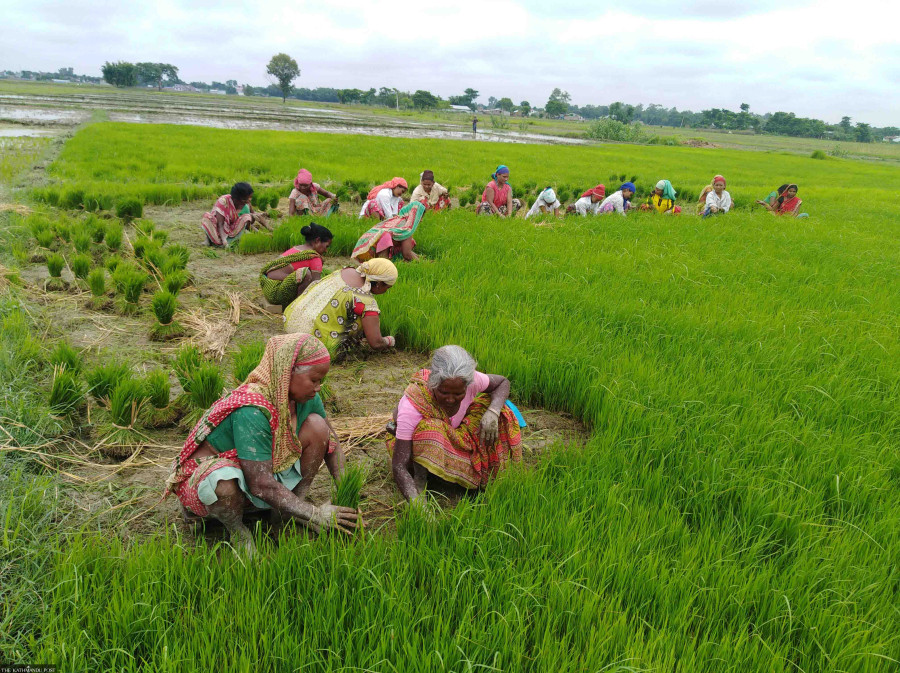Money
No chemical fertiliser shortage this paddy season, agriculture ministry says
This fiscal year, the ministry requested funds in mid-February to import fertiliser for paddy transplantation.
Post Report
At the onset of the paddy transplantation season, the agriculture ministry said there would be no shortage of chemical fertiliser.
Shortage of chemical fertilisers has become a recurring problem during every crop season for the past several years. These cause chronic distress to the tens of thousands of farmers annually who face other risks like droughts, floods and crop failure.
“We were unable to supply sufficient fertiliser to the farmers in the past years, but we won’t disappoint the farmers this season,” said Govinda Prasad Sharma, secretary of the Ministry of Agriculture and Livestock Development.
“We had done the homework for a robust supply mechanism by learning from past mistakes.”
“Traditionally, the Ministry of Finance allocates funding to import fertiliser through the budget in May. This year, we requested the ministry for the fund in mid-February to import fertiliser for paddy transplantation which begins in June.”
“We have issued tenders to import fertilisers till mid-December,” said Sharma.
The Agriculture Ministry said that till June 5, the government has 73,066 tonnes of chemical fertiliser—59,451 tonnes of urea and 13,400 tonnes of di-ammonium phosphate (DAP), 122 tonnes of potash—in stock.
The ministry said that 20,000 tonnes of DAP imported by Salt Trading Corporation will arrive in Kolkata on June 12.
Similarly, the shipping of 30,000 tonnes of urea and 25,000 tonnes of DAP imported by Agriculture Inputs Company has started.
The state-subsidised urea costs Rs14 per kg, while DAP costs Rs43 per kg. The potash is priced at Rs31 per kg.
The government has allocated a record Rs38.56 billion for chemical fertiliser in the current fiscal year. “We are expecting that the consignment will reach 478,000 tonnes by this fiscal year,” " Sharma said.
Meanwhile, the Nepal Agriculture Research Council has recommended the area-specific fertiliser dose for rice, wheat and maize.
Shree Prasad Bista, chief officer of the Nepal Agriculture Research Council, said that the chemical fertiliser dose has been recommended focusing on food security and also looking at the economic benefit and maximum yield.
The balanced use of fertiliser has been made taking soil fertility situation, irrigation facility and potential of crop production.
The recommended dose of phosphorus, potash, zinc, sulphate and borax needs to be used while using chemical fertilisers on rice, maize and wheat crops.
Nitrogen also needs to be used in three phases of paddy plantation.
Nearly two-thirds of Nepal’s farmlands are rain-fed and are dependent on the annual rains from June to September. Farming accounts for 24 percent of the economy but sustains more than 60 percent of the population.
Summer crops, mainly paddy, alone contribute over 11 percent to the national gross domestic product and are the major income source for more than half of the population.
Paddy, which is transplanted in June and harvested in October, contributes around 7 percent to the gross domestic product.
During the paddy planting season, Nepal requires 210,000 tonnes of chemical fertilisers. And the country must secure between 150,000-170,000 tonnes to avoid havoc.
In past months, according to state-owned fertiliser suppliers, many tenders were cancelled by global suppliers [who supply to the two state-owned companies] owing to higher international prices, resulting in a shortage of vital farm inputs.
Sharma, however, said that the prices of chemical fertiliser have dropped sharply this year and have improved the inventories to supply the fertiliser in a timely manner this year.




 16.24°C Kathmandu
16.24°C Kathmandu














